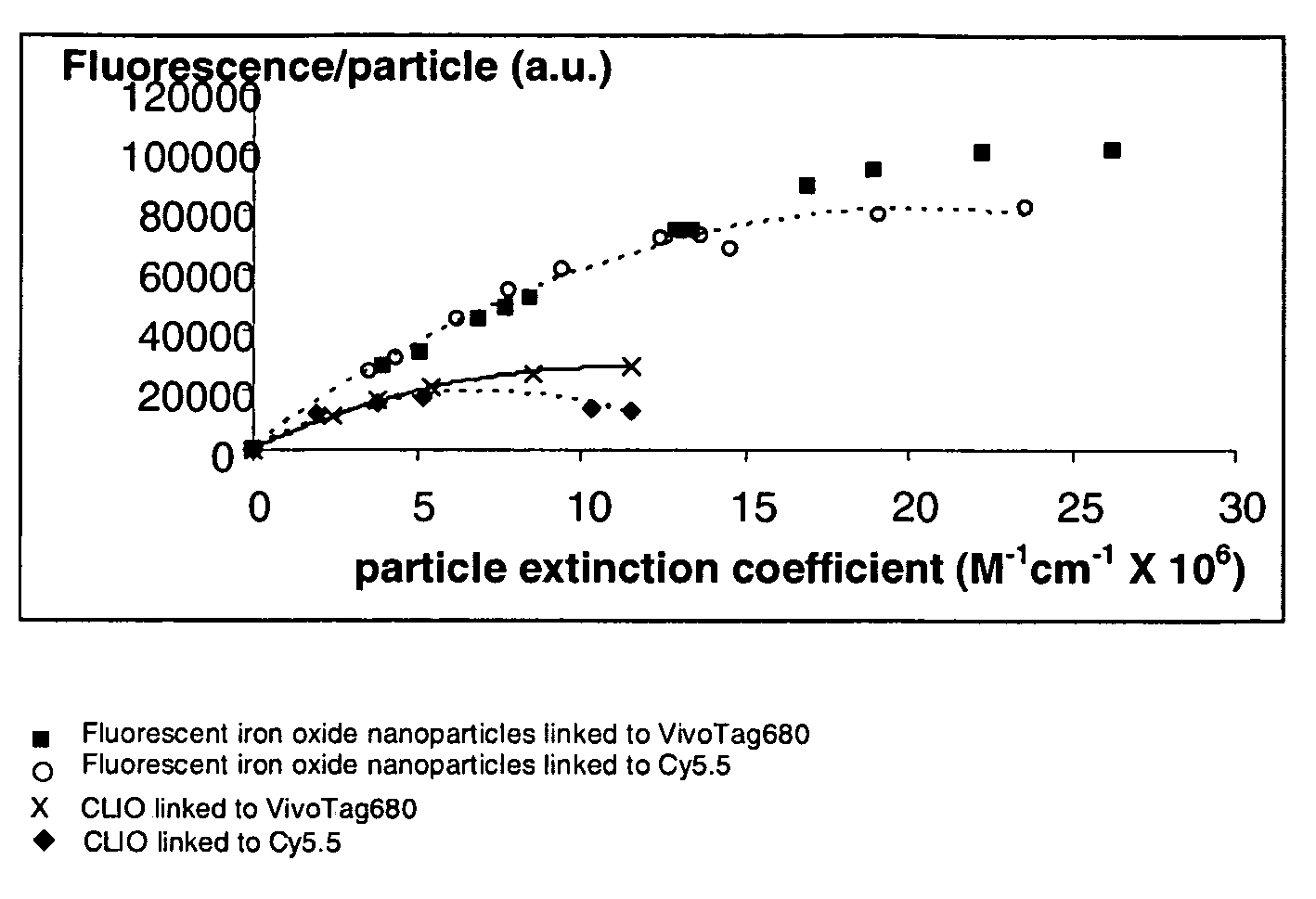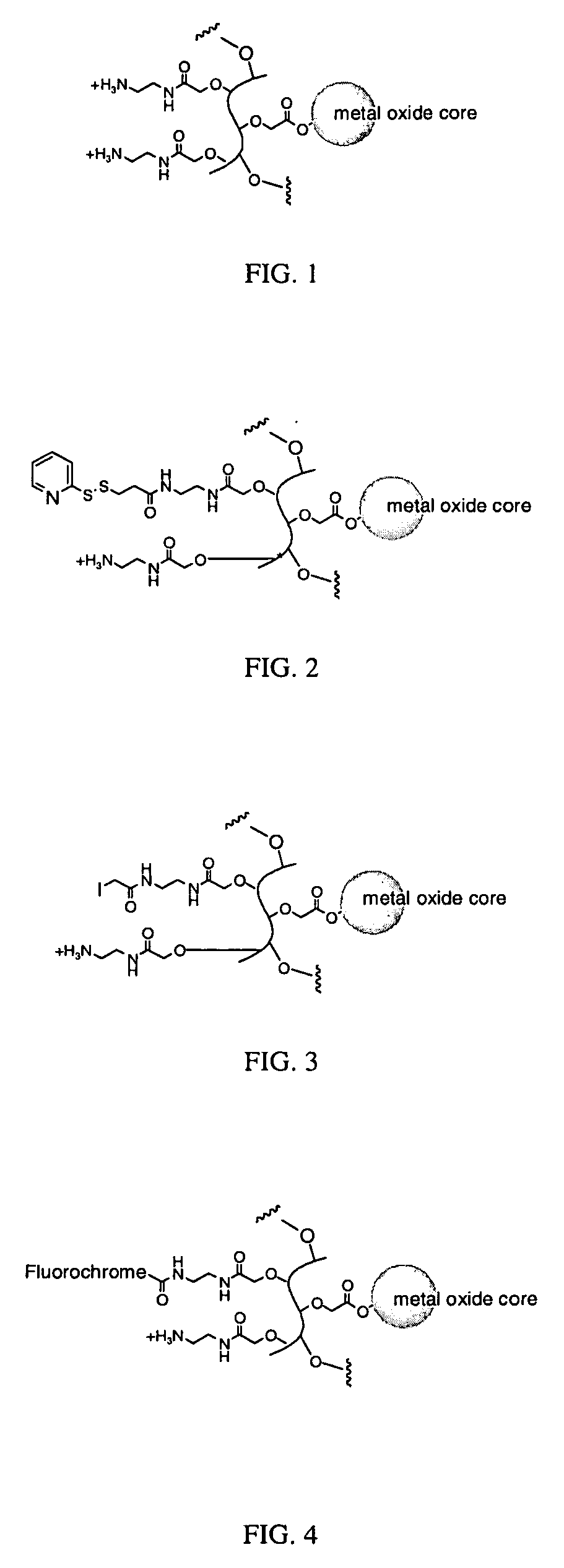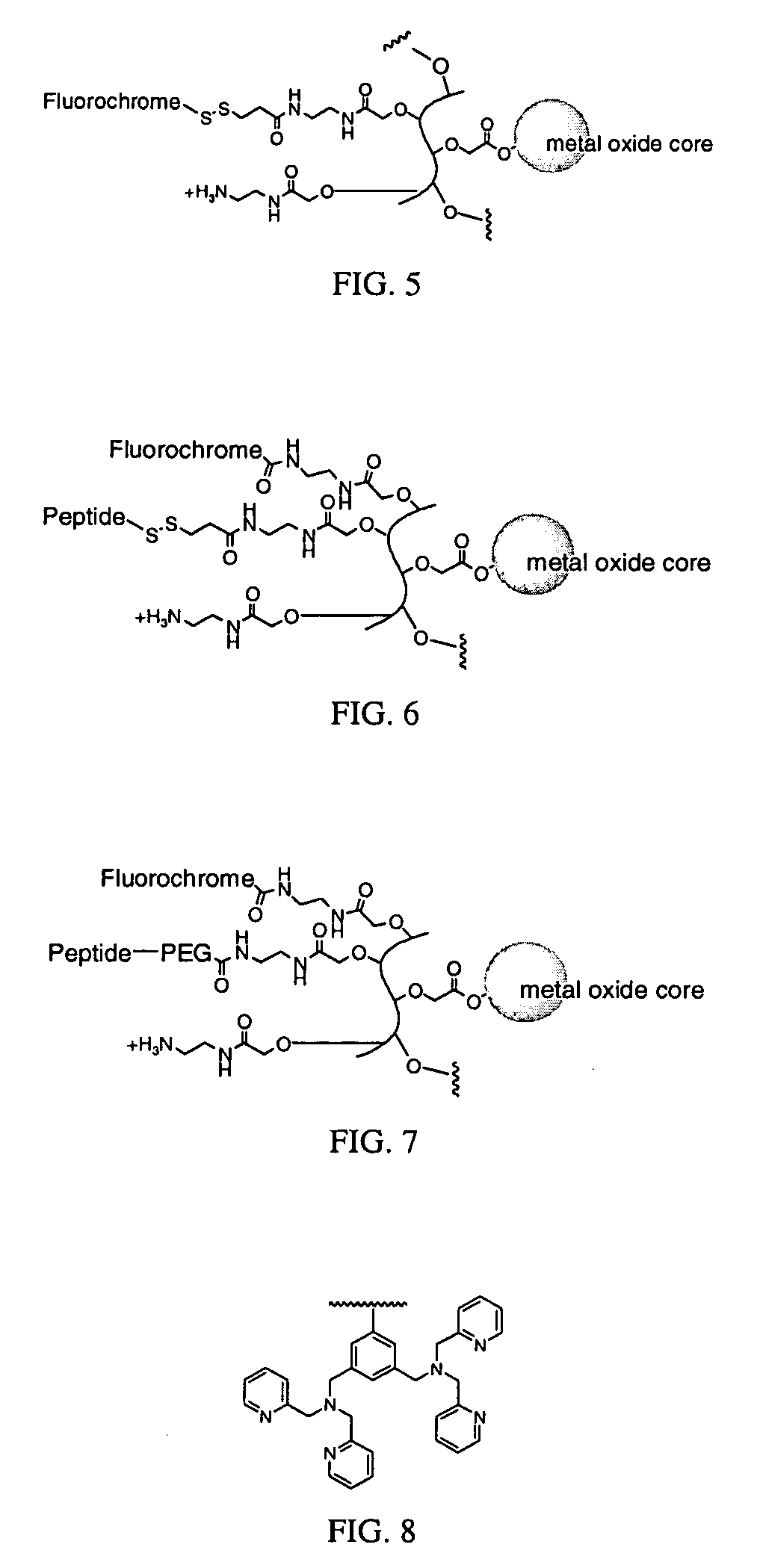Biocompatible fluorescent metal oxide nanoparticles
a metal oxide nanoparticle, biocompatible technology, applied in the direction of instruments, applications, drug compositions, etc., can solve the problems of limited target to background ratio, limited biocompatibility and stability, and limited development of combined optical/mri agents for molecular imaging applications
- Summary
- Abstract
- Description
- Claims
- Application Information
AI Technical Summary
Benefits of technology
Problems solved by technology
Method used
Image
Examples
example 1
Synthesis of an Exemplary Fluorescent Metal Oxide Nanoparticle
[0162]Polyvinyl alcohol (6 kDa, Polysciences, 30 g) was dissolved in 140 mL of water by heating to 90° C. The solution was cooled and transferred to a 500 mL jacketed beaker equilibrated to 15° C. 100 mL of 50% NaOH was added slowly with vigorous stirring using an overhead stirrer until a smooth, relatively homogeneous suspension formed. Bromoacetic acid (100 g) was dissolved in 50 mL of water and added slowly with vigorous stirring, making sure the temperature stayed below 35° C. After complete addition, the mixture was stirred for 15 hours at room temperature, and then neutralized with 6 M HCl to pH ˜7. Carboxymethyl-polyvinylalcohol was precipitated by addition of cold ethanol, filtered, washed with 70% ethanol, pure ethanol, and ether and then dried under vacuum. The carboxyl content (in μmol / g) of the polymer was determined by titration to neutrality of an acidified sample of the polymer. A range of 450-850 μmol / g wa...
example 2
Synthesis of an Exemplary Fluorescent Metal Oxide Nanoparticle with Polyethyleneglycol
[0166]The nanoparticle of Formula I from Example 1 (500 μL, 6.8 mg / mL iron) and 50 μL 0.1 M HEPES, pH 7, was combined with 8 mg of mPEG-SPA (5 kDa) and allowed to react at room temperature overnight. The pegylated particles were purified by gel filtration using Biorad Biogel P-60 eluting with 1×PBS to yield a nanoparticle of Formula II.
example 3
Synthesis of Exemplary Succinylated Fluorescent Metal Oxide Nanoparticles
[0167]Nanoparticles of Formula I from Example 1 (600 μL, 2.5 mg / mL iron) and 50 μL 0.1 M HEPES, pH 7, was combined with succinic anhydride (5 mg, 50 μmol) and reacted at room temperature for 5 hours. The succinylated particles were purified by gel filtration using Biorad Biogel P-60 eluting with 1×PBS to yield nanoparticles of Formula III.
PUM
| Property | Measurement | Unit |
|---|---|---|
| diameter | aaaaa | aaaaa |
| wavelengths | aaaaa | aaaaa |
| diameter | aaaaa | aaaaa |
Abstract
Description
Claims
Application Information
 Login to View More
Login to View More - R&D
- Intellectual Property
- Life Sciences
- Materials
- Tech Scout
- Unparalleled Data Quality
- Higher Quality Content
- 60% Fewer Hallucinations
Browse by: Latest US Patents, China's latest patents, Technical Efficacy Thesaurus, Application Domain, Technology Topic, Popular Technical Reports.
© 2025 PatSnap. All rights reserved.Legal|Privacy policy|Modern Slavery Act Transparency Statement|Sitemap|About US| Contact US: help@patsnap.com



